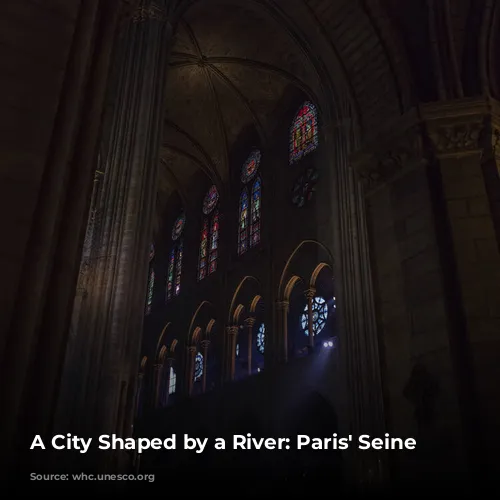Paris, a city of timeless beauty and iconic landmarks, has a story intricately woven with the River Seine. From the grand Louvre to the towering Eiffel Tower, from the Place de la Concorde to the Grand and Petit Palais, the Seine’s presence is felt throughout the city’s heart.
This paragraph introduces the subject of the article and highlights some of the key landmarks located along the Seine.

A River as an Architectural Canvas
The Seine, flowing through the heart of Paris, has acted as a catalyst for the city’s remarkable architectural evolution. The Ile de la Cité and Ile St Louis, with their charming bridges and quays, stand as testaments to the harmonious integration of architecture and nature.
This paragraph elaborates on the architectural significance of the Seine and its impact on the urban landscape.
The Cathedral of Notre-Dame and the Sainte Chapelle are architectural masterpieces that embody the spirit of the Middle Ages. The Pont Neuf, a bridge that signifies the French Renaissance, adds a touch of elegance to the city.
This paragraph delves into specific architectural landmarks along the Seine, highlighting different historical periods.
The districts of Marais and Ile-Saint-Louis, with their meticulously planned streets and squares, showcase the Parisian approach to urban planning from the 17th and 18th centuries.
This paragraph continues to showcase the architectural and urban planning achievements along the Seine.
A River of Influence: Parisian Town Planning
From the Palais de Louvre and the Invalides to the Ecole Militaire and the Monnaie, the Seine’s banks are adorned with the finest examples of French classicism.
This paragraph highlights the grand architectural achievements along the Seine, showcasing its role in shaping the city’s character.
The Universal Exhibitions of the 19th and 20th centuries left an indelible mark on the city, with the Eiffel Tower standing as a symbol of architectural innovation and a global icon of Paris.
This paragraph showcases the lasting impact of the Universal Exhibitions and their influence on the city’s skyline.
A River of Recognition: UNESCO World Heritage Site
The Seine’s banks are a UNESCO World Heritage Site, recognized for their exceptional architectural and urban heritage. From the Middle Ages to the 20th century, the city’s evolution is reflected in the diverse architectural styles and urban planning principles.
This paragraph highlights the international recognition of the Seine’s banks as a UNESCO World Heritage Site.
A River’s Role in History and Today
The Seine has been more than just a river for Paris. It has been a source of life, defense, and economic activity. Its relationship with the city has evolved over centuries, from the Parisii tribes to the modern metropolis.
This paragraph emphasizes the historical significance of the Seine and its enduring role in shaping the city’s development.
Protecting a Timeless Treasure
The Seine’s banks are a testament to the city’s heritage and its relationship with the river. However, this treasure is not immune to the pressures of modern urban development.
This paragraph highlights the challenges facing the Seine’s banks in terms of urban development and preservation.
Preserving the Seine’s Legacy
The city of Paris and the French government are committed to preserving the Seine’s banks. Strict regulations and preservation initiatives are in place to ensure that this precious heritage is passed on to future generations.
This paragraph highlights the ongoing efforts to preserve and manage the Seine’s banks for future generations.
In conclusion, the Seine is more than just a river for Paris. It is a defining element of the city’s character, history, and architecture. From its iconic landmarks to its charming bridges and quays, the Seine’s banks tell a story of continuous evolution and enduring beauty. The city’s commitment to preservation ensures that this precious heritage will continue to inspire generations to come.
